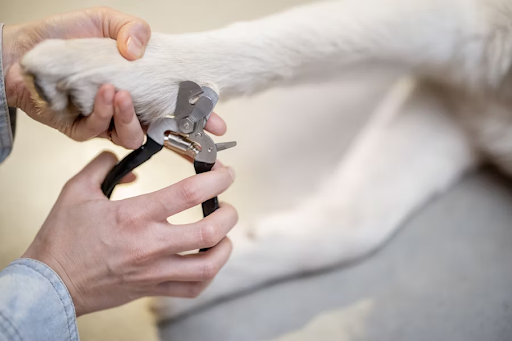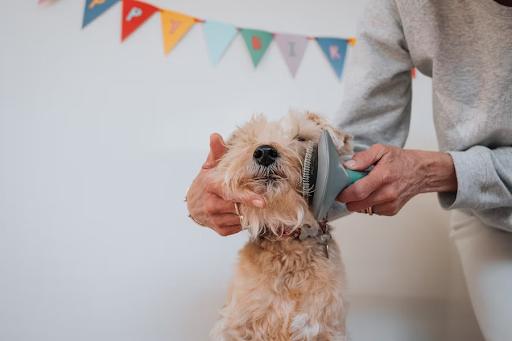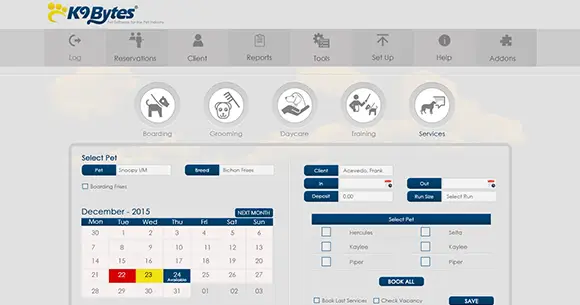Beyond daily walks and love, adopting a dog requires a significant commitment. Knowing what dog grooming entails goes beyond aesthetic appeal for the discriminating pet owner, particularly new dog parents. It is an investment in the long-term well-being, comfort, and overall standard of living of the pet. This comprehensive guide will explain the various facets of dog grooming and highlight its critical role in preventive pet care.
What is Dog Grooming?
The conventional notion of dog grooming involves bathing or trimming. However, “dog grooming” refers to an entire program of hygiene and upkeep designed to safeguard a dog’s physical condition.
Dog grooming involves bathing, coat maintenance, and health evaluation. A thorough examination and treatment from head to tail are essential for detecting possible health problems and guaranteeing the best possible pet hygiene.
What is Included in Dog Grooming Services
Understanding the components of dog grooming reveals a range of essential services that contribute to a dog’s overall health. A complete grooming session involves multiple elements, which are combined by professional groomers and increasingly sophisticated home groomers:
- Bathing and Drying: Extensive drying helps avoid matting and skin irritations; shampoos and conditioners tailored to the breed eliminate allergens, environmental pollutants, and loose fur.
Dematting and Brushing: Frequent brushing is crucial for promoting circulation, distributing natural oils, and preventing uncomfortable mats that could weaken the integrity of the skin.

- Nail trimming: Appropriate nail length is crucial for skeletal alignment and comfortable mobility. Neglected nails can result in pain, paw splaying, and possibly permanent joint damage.
- Ear Cleaning: Because floppy-eared breeds are particularly susceptible to moisture and debris buildup, regular ear cleaning is essential to preventing painful infections.
- Anal Gland Expression: While not always required, this procedure, when needed, helps many dogs avoid impaction, a common source of discomfort.
- Dental Hygiene: Despite the comprehensive nature of veterinary dental examinations, groomers frequently provide basic teeth-brushing techniques and guidance on maintaining inter-visit oral health, an essential aspect of systemic health.
- Hair Trimming and Styling: Proper hair trimming around the eyes, paws, and sanitary areas is crucial for comfort and hygiene more than appearance.
Pet Grooming Appointment Software ensures all services are available and customers can easily select what is necessary for their pets. This type of software makes the entire process more convenient and accessible.
Why is Dog Grooming Necessary for a Healthy Pet?
Frequent grooming significantly impacts a dog’s lifespan and vitality in addition to being a cosmetic activity. So, what is dog grooming and why is it important? Regarding health benefits, dog grooming suggests an unwavering commitment to preventative care, which lowers a variety of health problems and promotes overall well-being.
One of the best defenses against dermatological issues is pet grooming. Frequent grooming ensures that the coat and skin stay robust and healthy, as an essential barrier against infections and environmental stressors. Additionally, the grooming regimen offers a fantastic opportunity to detect health problems early.
Grooming includes a tactile examination that allows for the rapid identification of abnormalities such as:
- Parasitic infestations
- Skin lesions
- New growths
- Changes in coat texture
This allows for prompt veterinary intervention and frequently results in better treatment outcomes.
Common Health Issues Grooming Helps Prevent
Frequent grooming is an effective way to guard against several common health issues that affect dogs:
- Dermatological Conditions: Matted fur creates an anaerobic environment that retains moisture and bacteria, encouraging the growth of fungi, hot spots, and skin infections. Frequent grooming ensures proper air circulation and eliminates irritants.
- Excruciating Matting and Tangles: In long-coated breeds, neglected mats can result in severe discomfort, restricted mobility, and potentially compromised circulation. Preventative brushing is essential to avoiding uncomfortable disorders requiring extensive and taxing dematting or shaving.
- Parasitic Infestations: Grooming sessions offer an ideal setting for the early detection and removal of external parasites, including fleas and ticks, thereby averting widespread infestations and the associated health risks.
- Infections of the ears: Breeds with pendulous ears are especially susceptible to ear infections due to their susceptibility to moisture and wax buildup. Frequent cleaning is essential to maintaining ear canal hygiene and preventing pain.
- Periodontal Disease: Regular home hygiene, such as brushing your teeth, significantly lowers the buildup of plaque and tartar. This reduces the risk of gum disease, tooth decay, and systemic infections that can emerge from poor oral health. Professional dental cleanings are veterinary treatments.
- Paw Health Issues: Interdigital hair trimming reduces the likelihood of irritation, cuts, and infections while avoiding trash. Maintaining healthy nails helps prevent discomfort, abnormalities in gait, and potential musculoskeletal issues.
Dog Grooming and Emotional Health
Grooming improves the human-animal bond and has a significant emotional impact on dogs and their physical appearance.

- Reduced Stress and Anxiety: A consistent, gentle grooming routine helps many dogs relax. Frequent handling reduces anxiety during veterinary visits and other necessary physical interactions by fostering a sense of security. Brushing’s rhythmic feel has potential therapeutic benefits.
- Increased Mobility and Comfort: A dog’s clean, mat-free coat and well-maintained paws contribute to their physical comfort. Feeling free from physical discomfort greatly enhances a dog’s innate tendency toward playfulness, energy, and overall contentment.
- Bonding Experience: These sessions offer excellent opportunities for one-on-one interaction for owners who engage in home grooming. Trust and affection are strengthened through the focused attention and physical contact grooming provides, resulting in a stronger, more resilient bond.
- Socialization: Getting a professional groom can help dogs learn to interact with new people and situations in a relaxed way, which is essential for creating a well-adjusted temperament.
The Pet Grooming Industry and Your Options
Pet grooming: what is it? Its primary focus is the hygienic and aesthetic care of companion animals, making it a dynamic aspect of the vast pet care industry. It is part of the larger pet services industry, which has grown significantly and reflects pets’ essential role in families. Pet owners now have a variety of grooming options thanks to this industry expansion:
- At-Home Grooming: For proactive owners, doing daily chores like brushing, bathing, and simple nail trims at home promotes bonding and saves money. This method requires the right equipment and a basic knowledge of grooming methods.
- Professional Salons: Conventional grooming parlors offer a wide range of services, utilizing professional-grade products, specialized equipment, and the skills of skilled groomers to handle all breeds and temperaments, including those with complex coat needs.
- Grooming at Veterinary Clinics: Certain veterinary clinics provide grooming services, especially for animals that need sedation because of anxiety, aggression, or underlying medical issues. This integrated approach guarantees medical supervision throughout the grooming process.
What is Mobile Pet Grooming? A Modern Solution
What is mobile pet grooming? It’s a growing trend in pet care. This service sends a fully furnished, expert grooming salon to the customer’s home. A self-contained, climate-controlled unit arrives at your doorstep, providing your dog a stress-free, personalized grooming experience.
The benefits of using a mobile service to groom pets are substantial:
- Convenience: This service eliminates travel time and stress for both pet and owner, making it ideal for busy individuals, multi-pet households, or those with mobility constraints.
- Reduced Pet Stress: By minimizing exposure to unfamiliar environments and other animals, mobile grooming provides a calm, one-on-one setting, significantly reducing anxiety for many dogs.
- Personalized Service: Without the distractions of a busy salon, mobile groomers can offer undivided attention, tailoring services precisely to your dog’s unique needs and temperament.
- Accessibility for Specific Needs: Mobile grooming is an excellent solution for senior dogs, anxious pets, or those with health conditions who may find conventional salon visits challenging.
Keep Your Dog Healthy, Happy, and Clean
The inquiry into what dog grooming is unveils it as a fundamental pillar of responsible pet ownership, extending far beyond superficial appearance. It is an indispensable practice that profoundly impacts a dog’s physical health and emotional well-being, and reinforces the cherished bond with their human companions.
Regular grooming transitions from a mere service to a vital necessity by preventing common health ailments, facilitating early disease detection, and fostering emotional comfort.
Whether you choose to embrace the hands-on approach of at-home grooming, entrust your pet to the expertise of a professional salon, or opt for the modern convenience of mobile grooming, consistent engagement in this essential care unequivocally contributes to a longer, healthier, and happier life for your canine family member. Integrate grooming into your dog’s routine, and you actively invest in their well-being.




